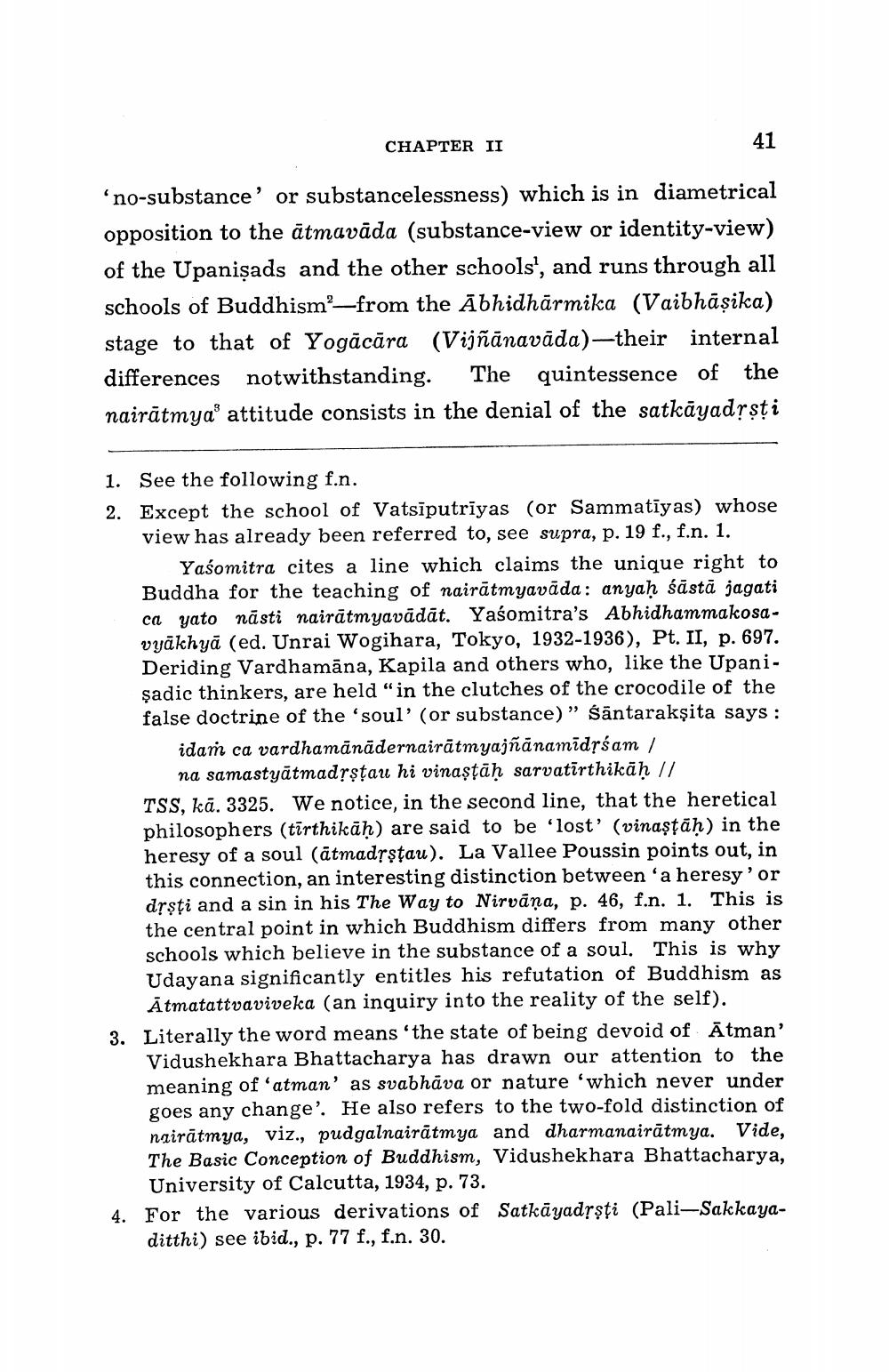________________
CHAPTER II
41
‘no-substance' or substancelessness) which is in diametrical opposition to the ātmavāda (substance-view or identity-view) of the Upanişads and the other schools', and runs through all schools of Buddhism'—from the Ābhidhārmika (Vaibhāșika) stage to that of Yogācāra (Vijñānavāda)—their internal differences notwithstanding. The quintessence of the nairātmya" attitude consists in the denial of the satkāyadrsti
1. See the following f.n. 2. Except the school of Vatsīputrīyas (or Sammatīyas) whose view has already been referred to see supra, p. 19 f., f.n. 1.
Yaśomitra cites a line which claims the unique right to Buddha for the teaching of nairātmyavāda: anyaḥ śāstā jagati ca yato nāsti nairātmyavādāt. Yaśomitra's Abhidhammakosavyākhyā (ed. Unrai Wogihara, Tokyo, 1932-1936), Pt. II, p. 697. Deriding Vardhamāna, Kapila and others who, like the Upanişadic thinkers, are held "in the clutches of the crocodile of the false doctrine of the 'soul' (or substance)” śāntarakṣita says:
idam ca vardhamānādernairātmyajñānamīdssam /
na samastyātmadsstau hi vinaștāḥ sarvatīrthikāḥ // TSS, kā. 3325. We notice, in the second line, that the heretical philosophers (tīrthikâh) are said to be 'lost' (vinaştāh) in the heresy of a soul (ātmadȚştau). La Vallee Poussin points out, in this connection, an interesting distinction between 'a heresy'or drsti and a sin in his The Way to Nirvāņa, p. 46, f.n. 1. This is the central point in which Buddhism differs from many other schools which believe in the substance of a soul. This is why Udayana significantly entitles his refutation of Buddhism as
Atmatattvaviveka (an inquiry into the reality of the self). 3. Literally the word means 'the state of being devoid of Ātman'
Vidushekhara Bhattacharya has drawn our attention to the meaning of'atman' as svabhāva or nature 'which never under goes any change'. He also refers to the two-fold distinction of nairātmya, viz., pudgalnairātmya and dharmanairātmya. Vide, The Basic Conception of Buddhism, Vidushekhara Bhattacharya, University of Calcutta, 1934, p. 73. For the various derivations of Satkāyadrșți (Pali-Sakkayaditthi) see ibid., p. 77 f., f.n. 30.




